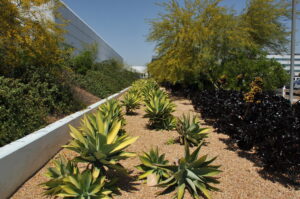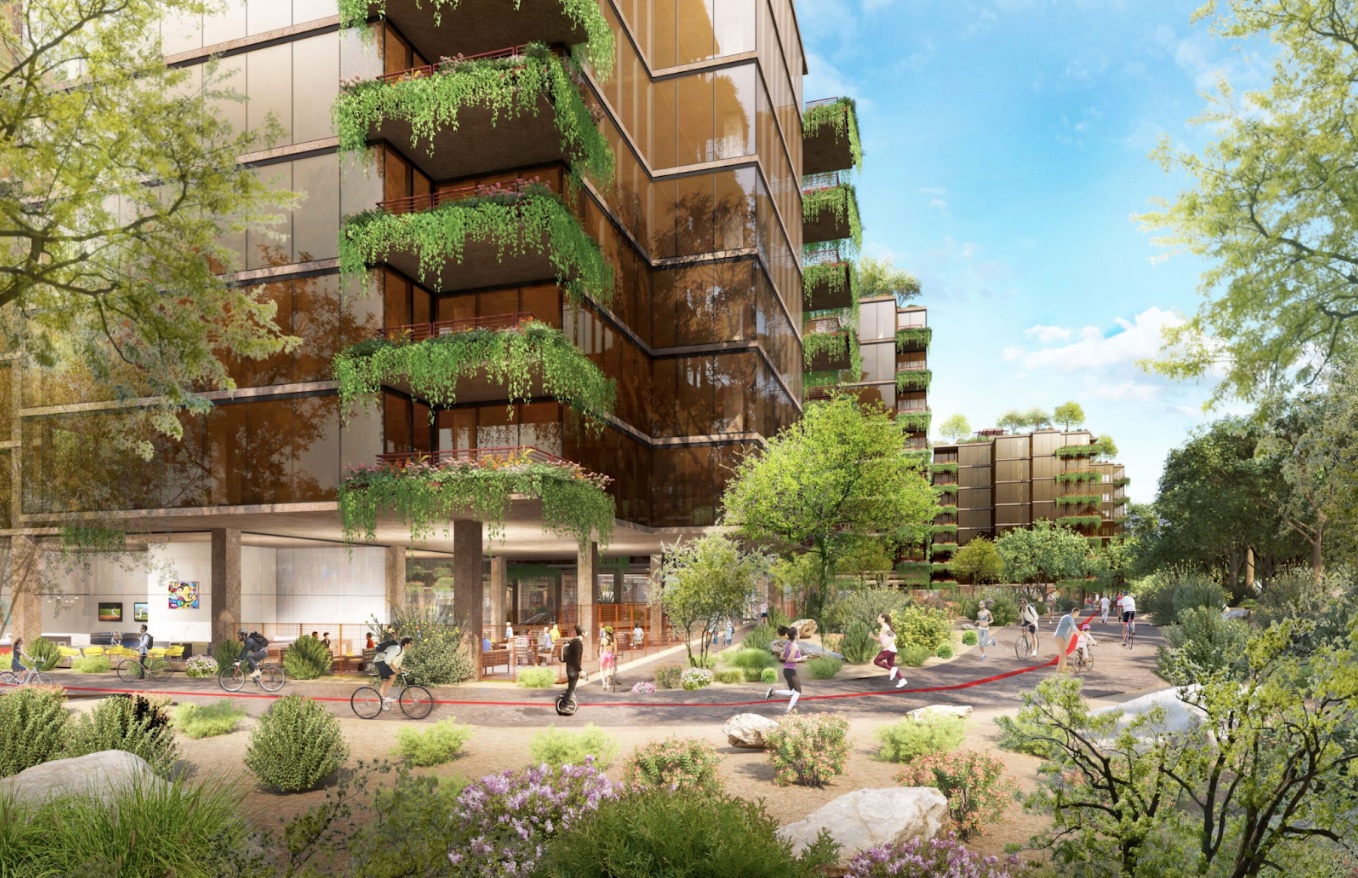As with many books, movies, and other forms of American-focused media, you’ll often find images of a lush green lawn, situated flush against a modest home. Unfortunately, to keep these lawns green all-year-round requires a good deal of water and upkeep. And with climate change and longer droughts looming, the need for a more environmentally-effective system of water conservation has become urgent.
At Optima®, we often talk about how the architecture of a residence and the land it inhabits can ultimately affect the landscape. For us, the conversation around, “How will this new structure affect the land around us?” remains central and compelling. As with all of our Arizona properties, it has been vital to embrace different forms of landscaping in order to design and build more environmentally-viable spaces that reduce the amount of water being used in more arid climates. Enter xeriscaping as one of our go-to solutions.
Xeriscaping in the simplest of terms is the practice of designing landscapes to reduce or eliminate the need for irrigation. This means xeriscaped landscapes need little or no water beyond what the natural climate provides. This way of landscaping can be traced back to the early 1980s, originating in Denver, Colorado, and has become widely popular in some areas because of its environmental and financial benefits.

The importance of xeriscaping lies in its power to nurture vegetation that can survive with little to no water. Trees such as myrtles, and flowers such as daffodils are known as “drought-tolerant” and can thrive in dry climates, making them appropriate for a landscaping system such as xeriscaping.
Xeriscaping can reduce water usage by 50 or 75 percent. This in turn saves literally tons of water and money for any given community. Another critical component of xeriscaping is installing better and more efficient irrigation methods. One way this can be achieved is through grouping different types of plants together with similar water needs.
Today, the Optima® team is focusing on the landscaping design for Optima McDowell Mountain Village®, with a focus on water conservation and a 210,00-gallon storm water tank that will repurpose captured water for irrigation. There will be much more to share on this topic in the months ahead!

